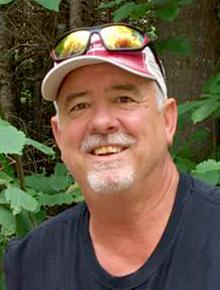
Open day of 2022 pheasant hunting season was Oct. 15. I hosted Minnesota Governor Tim Walz in Worthington that weekend. It was quite an event. There were media outlets of all kinds in town for the event. Many of those hunted on the public lands of southwest Minnesota.
Finding a good hunting spot on opening weekend is not possible. The weather is usually pretty good, and this weekend probably brings the most hunters to the field of any day of the regular season. Getting to a spot at 6 a.m. does not eliminate the risk that some other less respectful hunter won’t show up 10 minutes before legal shooting time and walk all over your plans.
After the opening weekend circus, this gets a little better, and I do have a few pointers as to how to pick a top spot when things are still pretty competitive.
The first one is to completely forget the Minnesota DNR’s pheasant density map. This is compiled from roadside counts done in the first two weeks of August and is a relatively good indicator of where pheasant populations would be the highest. The problem with this is that every other hunter in the state will be using that same map.
I would have no hesitation to hunt in areas of the state that show lower pheasant populations. Few pheasants might also mean far fewer hunters to compete with. I would rather hunt a spot with five birds on it and be the only one than to hunt on a spot that might have 20 birds on it and have four other guns chasing them as you would be doing.
I did the routes in Nobles County and they showed very poor populations, but my personal investigation and scouting indicate a very different picture. Consider areas less populated and enjoy your hunt with less interruption from other hunters.
My second recommendation is to hunt areas that are called Waterfowl Production areas managed by the United States Fish and Wildlife Service instead of Wildlife Management areas managed by the Minnesota Department of Natural Resources. Federal properties require non-toxic shot and there will always be that section of hunters who think non-toxic shot does not kill birds as well. This was certainly the case 20 years ago, but modern-day non-toxic shot alternatives are deadly pheasant killers these days.
These areas just plainly and simply don’t get as much hunting pressure as the areas that allow lead shot. Depending on where you are located in the state matters, but these areas are available pretty much in every county.
Hunt as far from a hard-surfaced road as you possibly can. I have people call me all the time when they are in my area asking me where they should go. Many of them won’t drive their wife’s SUV on a gravel road. Sounds silly but it is so true and happens far more often than you might think. Add in a little rain and the thought of two hours in the car wash when they get home is a thought provoker for many.
Hunt smaller spots. Other hunters want to go where they can park the car or truck and not have to move it for the rest of the day. They pick out the largest hunting areas and concentrate on those. Hunting smaller spots will very likely lead you to birds that have not yet seen a hunter that day.
My last tip – and the one most less successful hunters have the hardest time with – is to hunt for 90 minutes at the opening bell and then rest your legs and the dogs until the last hour of the day. Hunters will take off at the 9 a.m. opening bell and by 1:30 p.m. their energy and the dogs’ energies are completely spent. The roosters will have spent their day in a cornfield hiding from hunters and gathering up their supper and will head back to cover after all of the hunters have left.
I have sat on my tailgate and watched hunters pound a spot with no luck and after they have left, I will continue to sit there until the last 45 minutes. During that time I see roosters returning, and I watch where they settle in. Many times, in about 20 minutes I can do better than the ground pounders did all day.
Save your legs and your dog’s energies and hunt after everyone else has left. You can then be the hunters with game pictures to post instead of an empty vest and 20 empty water bottles.
Scott Rall, Worthington, is a habitat conservationist, avid hunting and fishing enthusiast and is president of Nobles County Pheasants Forever. He can be reached at scottarall@gmail.com. or on Twitter @habitat champion.




